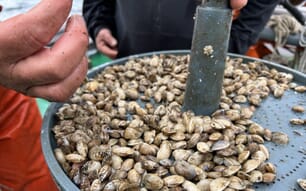Researchers in the US have now quantified this effect for the first time and are calling for incentives for residents to use materials that encourage these filter-feeding organisms to colonize.
Craig Layman, then at Florida International University, US, and his colleagues looked at oyster populations in the Loxahatchee River and estuary, on the southeast Atlantic coast of Florida. Manmade development has greatly disturbed shoreline habitats here, but the river still supports ~60,000 sq. m of natural subtidal oyster reefs as well as an additional 24,000 sq. m of oyster restoration reefs that were constructed in the river in 2010.
“We found that filter-feeding organisms that colonized dock pilings have about 30 per cent of the filtration capacity of the entire 60,000 sq. m of natural reef habitat,” Layman told environmentalresearchweb.
“Perhaps even more surprising is that dock piling filtration is roughly double the estimated filtration capacity of the organisms supported by the large-scale oyster restoration reefs.”
Layman believes that by encouraging dock owners to use more oyster-friendly materials, this figure could be increased even further. The study found that concrete pilings supported 68 per cent of total filtration, despite accounting for only seven per cent of all pilings. Other pilings are made from wood, PVC pipe filled with concrete or wood wrapped in a high-density polyethylene material (pile wrap). Pile wrap was the most common dock piling type, making up 69 per cent of the river’s dock pilings, yet these pilings supported only 10% of all filtration.
“Introducing a tax credit for concrete pilings, which are the most expensive type of piling but the most oyster-friendly, would encourage home owners to use this material,” said Layman.
“Substituting pile wrap pilings for concrete pilings could even negate the need for expensive projects such as the building of artificial reefs. We are not justifying the conversion of natural shorelines to manmade structures, but our research has shown that, if development takes place, a careful choice of materials can minimize the effect on populations of filter-feeding organisms.”




